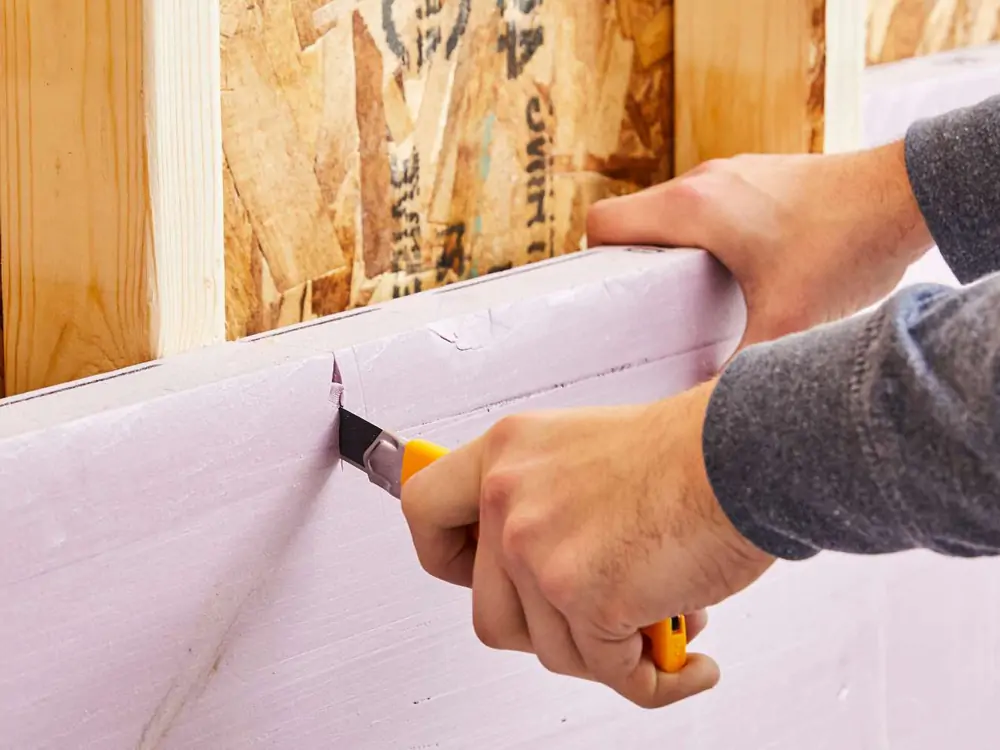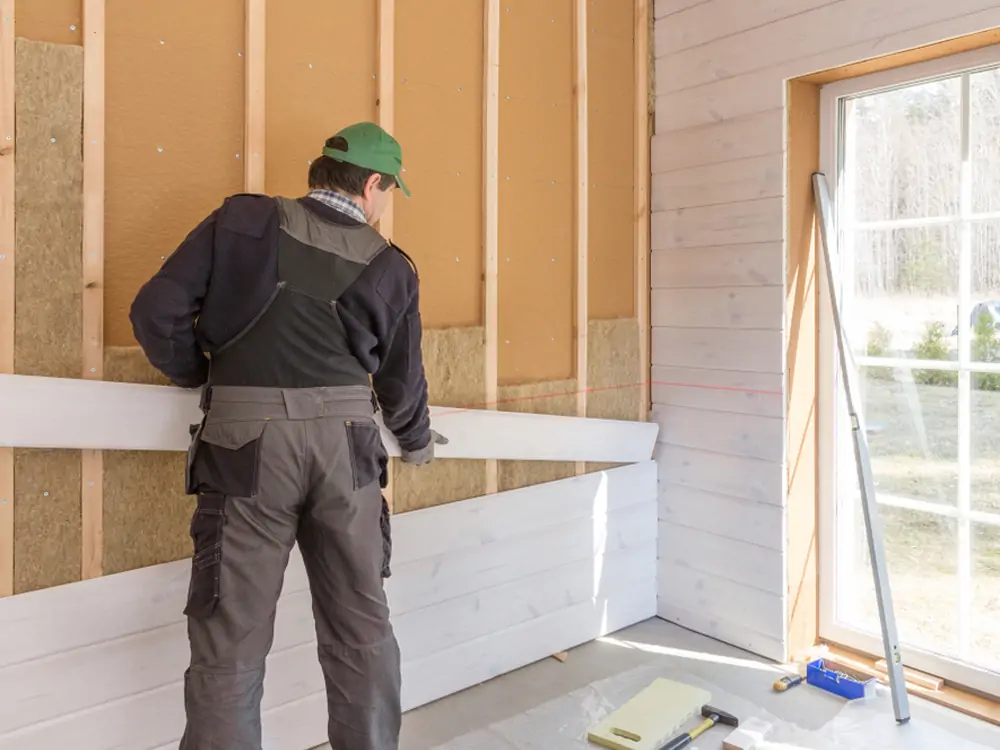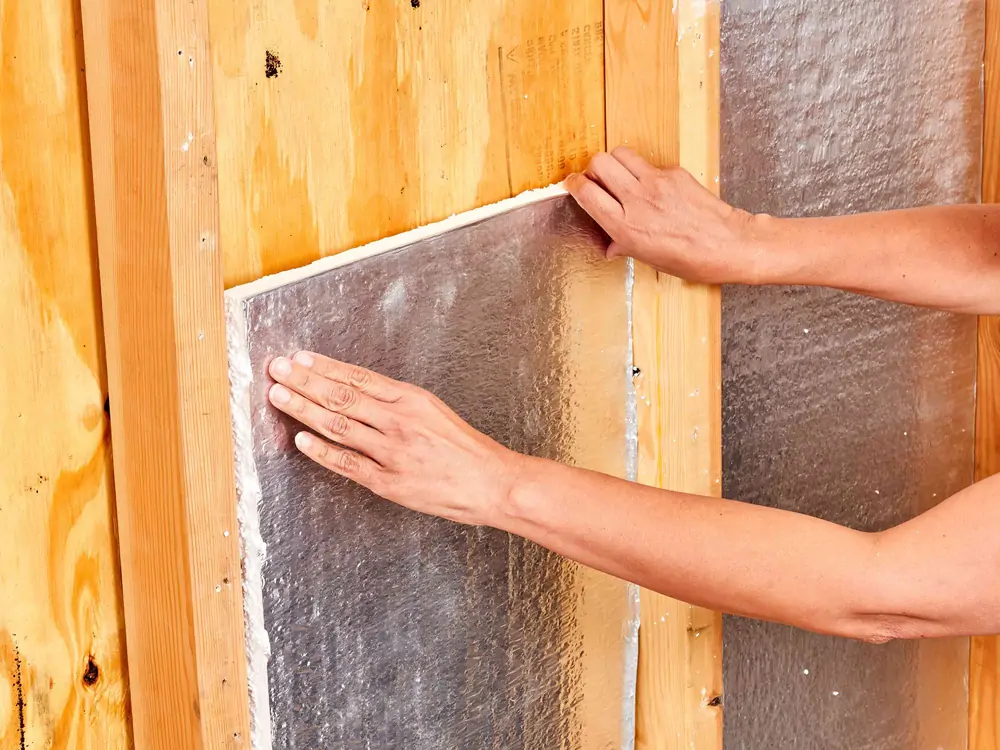Installing foam board insulation is a skill worth acquiring for any DIY enthusiast. These are lightweight boards that can be used throughout the home, especially in basement walls. The goal of this post is to explain how to install foam board insulation. Hopefully, it will help you install foam board insulation in an efficient and straightforward way.

What Is Foam Board Insulation?
Foam board insulation refers to sheets of foam that usually measure 4 feet by 8 feet. The thickness of a foam board insulation sheet ranges from 0.5 to 2 inches. The purpose of using these sheets is to insulate walls.
Closed-cell foam boards are impressively strong, durable, and designed to withstand pressure. Contrary to fiberglass, which also provides great insulation, foam boards are highly moisture-resistant. That is part of the reason they are great for basements.
There are basically two types of thermal insulation boards for walls. They are EPS (expanded polystyrene) and XPS (extruded polystyrene). Foam board insulation is preferable to fiberglass insulation for basements.
Where Do You Need Foam Board Insulation?
You can use foam board insulation just about anywhere you would use other types of insulation. Examples include batts, spray foam and attic insulation. You may want to use foam insulation to prevent something from getting wet. With that said, foam boards are not the best option for applications with space limitations. Also, do not use foam board insulation if you want to insulate a heated basement.
This is because other materials provide more R-value per inch. For vaulted ceilings, insulated floors, and floor walls, the best option is, of course, foam board insulation.

Things You Need for Foam Board Insulation
Before you even get started, choose the right type of foam board insulation for your project. Learn about your options and learn about the differences between EPS and XPS foam boards. And then, choose the right type of wallboard insulation. Before you start working with foam board insulation, make sure you have the following things ready:
- Utility knife
- Straightedge
- Measuring tape
- Marker
- Framing square
How to Install Foam Board Insulation on Surface Mount Interior Walls
Step 1: Measure and Cut Insulation Boards
First of all, you have to figure out the amount of wallboard insulation you need for the project. Use a tape measure for this. 4-foot by 8-foot (32 square feet) sheets are very common. For an 8-foot high wall, you can install such a sheet without any trimming. You will have to cut multiple boards for a shorter or taller wall.
One thing is notable here. Wall studs typically measure 12, 16 or 24 inches. That means you have to trim the boards only lengthwise. The edge of your sheet will always fit the stud. And for an irregularly shaped wall, you will have to use a sharp knife to trim each sheet.
How do you cut styrofoam insulation? Take a sharp blade and cut an aggressive angle straight through the styrofoam insulation panels.
Step 2: Hang the Rightly Sized Boards
Here is how to hang foam core on the wall. You can use either construction adhesive or button cap nails. The former method is more convenient in most cases.
The spacing must be correct. Otherwise, the board will not fit the stud. You also have to make sure the sheets that are put side by side are connected to one stud. This way, the boards will make the wall laterally strong.
Because drywall is typically placed horizontally, the foam boards should be installed vertically. An unwanted crack or intersection might appear later if both the boards and the drywall are installed in the same direction.
Step 3: Apply Joint Tape over the Joints
It’s a good idea to seal the joints. However, depending on the type of your project, this part can be optional.

Installing Foam Board Insulation Inside the Wall
The typical wall measures 2″x4″. If your walls are thicker, you have to install foam board insulation inside the wall. And if the walls are not thicker than normal, they won’t allow for the building code-recommended r-value.
There are spaces between studs. First, measure the spacing. Typically, 2×6″ walls are 16″ or 24″ centers. You do not need to measure the spacing outside to outside. Just measure inside to inside.
For example, for 24″ centers, the width of your foam board should be 21″, which is the space between those studs. Depending on the type of project you are working on, you may have to use construction adhesive to glue several layers of foam sheets together. You can also use especially designed interior wall insulation panels as well.
Installing Foam Board Insulation on Cement or Masonry Block Walls
Step 1: Choose a Method
Whether you are installing foam boards on a stud wall or block wall, you have to do the measuring the same way. When it comes to gluing foam board to concrete, the difference arises when you attach the foam board insulation. First, attach furring strips on the wall and then attach the foam boards to the furring strips.
You are probably wondering how to attach foam board to concrete. The boards should not be directly glued to the block. That is because the insulation is better when there is an air gap between the board and the wall. The basic procedure is more or less the same for foam board insulation in attic or any other place in your home.
Step 2: Install the Furring Strips
A professional installer uses masonry nails and a pneumatic nail gun to install furring strips. Like wall studs, place the furring strips on consistent centers. The strips should cover the area from the floor to the ceiling.
Ideally, you should use construction adhesive to install furring strips over foam boards. Alternatively, you can use nails. Make sure there is a gap of 3/4″ between the foam board and the block wall. Thus, even if moisture comes from the block, the foam will remain unaffected. The insulation works better if there is a little bit of gap between the foam and the wall.
Frequently Asked Questions about Installing Foam Board Insulation
What is R-value?
R-value refers to the efficiency of insulation. A material with a higher R-value means it is capable of stopping more flow of heat. ESP has the highest insulative capabilities than any other material.
Can I install foam board insulation by myself?
Yes, the procedure is fairly easy. You just need to cut the foam boards and install them with the help of a few easily available tools.
How do you cut foam insulation?
Use a utility knife and cut the foam in steady movements. To make the process smooth, create a cutting knife before you actually cut the foam board. Segmented utility knives, which are also called box cutters, are pretty easily available.
Is it necessary to seal joints in foam board insulation?
Yes. The joints of foam boards must not align. There must be gaps between the boards–to mitigate thermal bonding.
What finishing materials are used with foam board insulation?
The most commonly used finishing material is drywall. However, other materials, such as mortar, wood, and vinyl, are compatible with EPS and XPS foam boards.
What is the purpose of foam insulation?
Foam insulation is used for thermal resistance. If you want to prevent anything from getting wet, you can use foam board insulation for this purpose.
Wrapping Up
For a DIY enthusiast, installing foam board insulation is fairly easy and fun. Choose the right foam board insulation and get the materials ready at hand. And if you do not want to waste the board, be careful about measurements.
